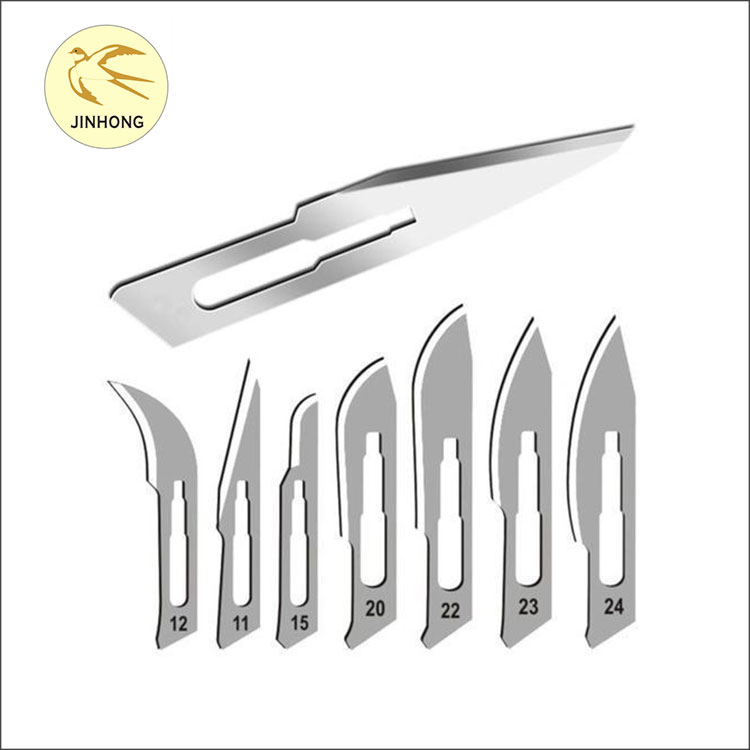The Importance of Surgical Instruments in Modern Medicine
2025-01-04
In the world of medicine, precision is paramount, and the tools used by healthcare professionals are just as critical to a successful outcome as the knowledge and skills of the surgeons themselves. Surgical instruments are the backbone of modern surgery, designed to perform a wide range of procedures, from routine operations to complex life-saving interventions. These instruments are essential for tasks like cutting, grasping, suturing, and probing, ensuring that procedures are performed safely, accurately, and efficiently.
In this blog, we’ll explore the role, types, and significance of surgical instruments, highlighting their importance in maintaining the highest standards of patient care.
What Are Surgical Instruments?
Surgical instruments are specialized tools designed to assist surgeons during medical procedures. They are crafted for specific functions, such as making incisions, controlling bleeding, or holding tissue in place during surgery. These instruments are made from durable, corrosion-resistant materials like stainless steel, titanium, or specialized alloys, ensuring that they can withstand the rigorous demands of surgical environments.
From scalpels to forceps and scissors to retractors, surgical instruments play a crucial role in ensuring the smooth operation of medical procedures. They must meet the highest standards of quality and precision to guarantee the safety and success of the surgery.
Types of Surgical Instruments
Surgical instruments are classified based on their function, and each type is designed to serve a particular purpose during surgery. Here are some of the most common categories of surgical instruments:
1. Cutting Instruments: As the name suggests, these instruments are designed for cutting tissues or other materials during surgery. Common examples include:
- Scalpel: A small, sharp blade used for making incisions.
- Surgical Scissors: Used for cutting tissues, sutures, and other materials with precision.
2. Grasping and Holding Instruments: These tools are used to hold or manipulate tissues and other objects during surgery. They help stabilize the surgical field for better access and control. Examples include:
- Forceps: Tweezer-like instruments used to grasp tissues, blood vessels, or other objects.
- Needle Holders: Used to hold the needle securely while suturing tissue.
3. Clamping Instruments: These instruments are used to control blood flow by clamping blood vessels or tissue. They help minimize bleeding during surgery and ensure that the surgeon can perform tasks with precision. Examples include:
- Hemostats: Used to clamp blood vessels and control bleeding.
- Clamps: Designed to hold tissues or organs in place during surgery.
4. Probing and Dilating Instruments: These are used for exploring body cavities or ducts and for opening up passages that might be too narrow. Examples include:
- Probes: Used to explore wounds, cavities, or blood vessels.
- Dilatators: Designed to expand or stretch narrow passages, like the cervix or urethra.
5. Suturing and Stapling Instruments: After surgery, these instruments are used to close incisions or wounds. Suturing involves stitching the skin or tissues together, while stapling can be used for faster closure in some surgeries. Examples include:
- Needle Holders: Used for holding the needle while stitching.
- Staplers: For applying staples to close incisions.
6. Retracting Instruments: These are used to hold back tissues or organs during surgery, giving the surgeon a clear view and better access to the area being operated on. Common types include:
- Handheld Retractors: Manually held by the assistant to pull back tissues.
- Self-Retaining Retractors: These instruments hold tissues back on their own, reducing the need for a surgical assistant.
7. Electrosurgical Instruments: These tools use electrical currents to cut tissue or coagulate blood vessels, reducing bleeding and improving precision. Examples include:
- Electrocautery: A tool used to burn tissue or stop bleeding by applying heat.
- Bipolar Forceps: Used to coagulate blood vessels by passing a small electric current through the tissue.
The Role of Surgical Instruments in Surgery
The primary role of surgical instruments is to facilitate the surgeon’s ability to perform medical procedures with precision and safety. Each instrument is specifically designed to reduce the risks of infection, bleeding, and complications during surgery. The accuracy with which surgical instruments are designed and used can make the difference between a successful and unsuccessful surgery.
1. Precision: Surgical instruments are engineered for precision. Whether it’s making a tiny incision or suturing delicate tissue, these instruments allow surgeons to operate with accuracy. This precision reduces the likelihood of complications such as excessive bleeding or infection.
2. Efficiency: By using the appropriate surgical instruments, procedures can be performed faster and more effectively. The right tools streamline the surgical process, allowing the medical team to focus on the task at hand and reduce the time the patient is under anesthesia.
3. Minimizing Trauma: Surgical instruments are designed to minimize trauma to surrounding tissues. For example, sharp scalpels or fine scissors allow surgeons to cut with minimal damage to the surrounding areas, promoting faster healing and reducing the risk of complications.
4. Safety: Safety is one of the top priorities in surgery, and the right instruments are essential to maintaining it. Tools that provide a firm grip, minimize bleeding, or assist in controlling the surgical site are integral to keeping the patient safe throughout the operation.
5. Post-Surgical Care: Many surgical instruments are used for post-operative care as well. For instance, retractors may be used during the procedure to give surgeons better access, while surgical scissors and forceps are also key in closing incisions and minimizing infection risk.
The Evolution of Surgical Instruments
The development of surgical instruments has come a long way from the basic tools used in early human history. Ancient civilizations such as the Egyptians and Greeks developed rudimentary tools for surgery, but it wasn’t until the Renaissance that modern surgical instruments began to emerge. The Industrial Revolution further accelerated the production of precision tools, and today, surgical instruments are often crafted with the most advanced technology available.
In recent years, there has been a significant advancement in materials used for surgical instruments. Stainless steel, titanium, and even carbon fiber are used to manufacture tools that are stronger, more durable, and less likely to cause adverse reactions in patients. The introduction of minimally invasive surgery techniques has also led to the development of smaller, more precise instruments, allowing surgeons to perform procedures with smaller incisions and faster recovery times for patients.
Sterilization and Maintenance of Surgical Instruments
Due to the critical nature of surgical instruments, proper sterilization and maintenance are essential to ensure they remain safe for use. Inadequately sterilized instruments can lead to infections or other complications, which is why strict protocols are followed in hospitals and surgical centers.
- Autoclaving: This is the most common method of sterilizing surgical instruments, using steam under high pressure to kill bacteria, viruses, and fungi.
- Cleaning: Instruments must be cleaned thoroughly before sterilization to remove organic matter like blood, tissue, or fluids that could interfere with the sterilization process.
- Inspection and Maintenance: Regular inspections ensure that instruments are free from defects like rust or cracks, and they are often sharpened or replaced as necessary to maintain their performance.
Conclusion
Surgical instruments are much more than just tools—they are essential to the success and safety of modern medicine. These instruments enable surgeons to perform precise, efficient, and safe procedures that save lives and improve the quality of life for countless patients. As medical technology continues to evolve, so too do the instruments that make these procedures possible, with advancements that enhance both their functionality and the overall surgical experience.
Whether it’s a simple incision or a complex, high-stakes operation, surgical instruments are at the heart of every surgical procedure, ensuring that healthcare professionals can provide the best possible care to their patients.



